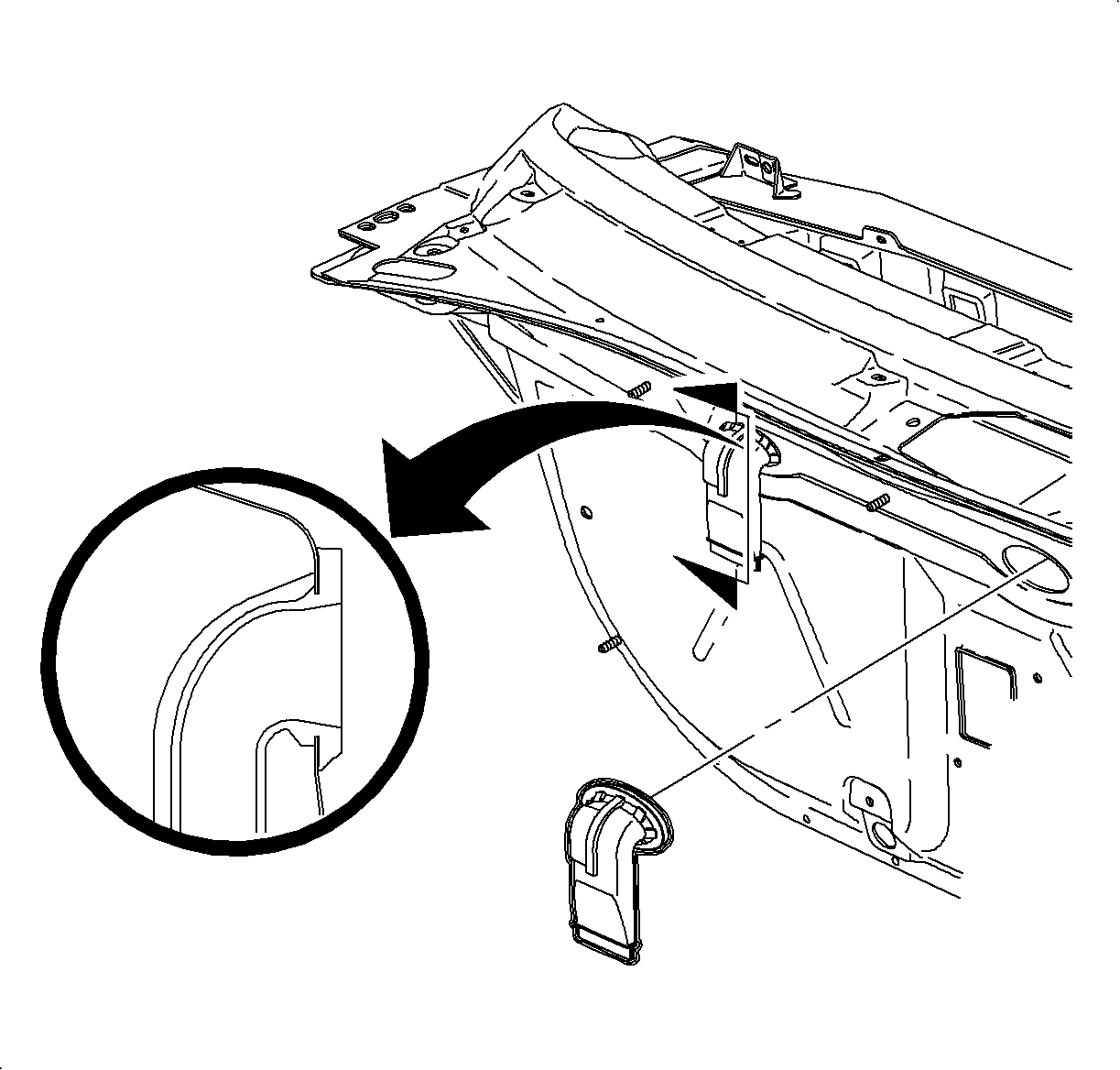Plenum Drainage

Plenum drainage is accomplished with check-valves. If the cowl area is not draining properly, remove and clean the check-valves.
The Wind Noise Condition
The first step of the repair process in correcting wind noise is to identify the causes of the noise. A determination must be made as to whether the cause of the noise is air escaping from the vehicle or outside air turbulence.
To assist in diagnosing the cause of a wind noise concern, answers to the following questions should be obtained from the customer:
- What specific noise is objectionable?
- At what speed does the noise occur?
- Does the noise appear to be:
- In what general area does the noise appear to originate?
- Is the HVAC blower motor ON or OFF?
| • | Whistle |
| • | Flutter |
| • | Rush of air |
| • | Air leaving the body? Internal windnoise |
| • | Air passing over the body's exterior surface? External wind noise |
| • | Front of the vehicle |
| • | Side of the vehicle |
Analyzing Wind Noise

When analyzing wind noise, it is important to understand the forces that act upon the vehicle that can create this condition. As air strikes and bends around the front of a vehicle in motion, it causes a low-pressure area to develop around the front pillars and side window locations of the body. At the same time air flow that is filtered through the vehicle's vents and/or AC system will cause high-pressure to build-up inside the passenger compartment. The faster the vehicle is traveling, the greater the pressure difference between the inside and outside of the vehicle becomes.
The high inside pressure (1) and low outside pressure (2) is separated only by the vehicle's exterior panels, glass, weatherstrips, and body seals. When an opening is created at a body seam or weak weatherstrip contact area, the high inside pressure will move towards the low outside pressure and create an internal windnoise.
Wind rush or external wind noise is created by the air passing over and around misaligned body components such as mirrors and door moldings.
The Road Test
To analyze a reported wind noise condition, a test drive in the vehicle is necessary due to the many conditions that could cause the objectionable noise and determine if the wind noise condition is external, internal or a combination of the two.
The following items should be used by the technician during the test drive to aid in locating the leak area:
| • | Mechanic's stethoscope or vacuum hose |
| • | Masking tape -- 2 inches in width |
| • | 3M ® Strip-Calk -- P/N 08578 or equivalent. |
| • | China marking pencil |
The vehicle should be driven at the speed in which the noise was noticed by the customer or until it is heard.
If the noise can be heard with the door glass lowered and the vehicle driven, it is most likely external wind noise.
Locating an external wind noise is accomplished by taping off various moldings and gaps until the noise is eliminated to pinpoint the exact cause of the noise.
If the noise is more distinct with the windows in a full-up position while the vehicle is driven, it is most likely internal wind noise caused by an open body seam or poor glass/door weatherstrip sealing surface.
Visual Inspection
Visually check for misaligned components, loose fasteners, torn weatherstrips, broken weld joints and/or sealer and/or adhesive skips.
